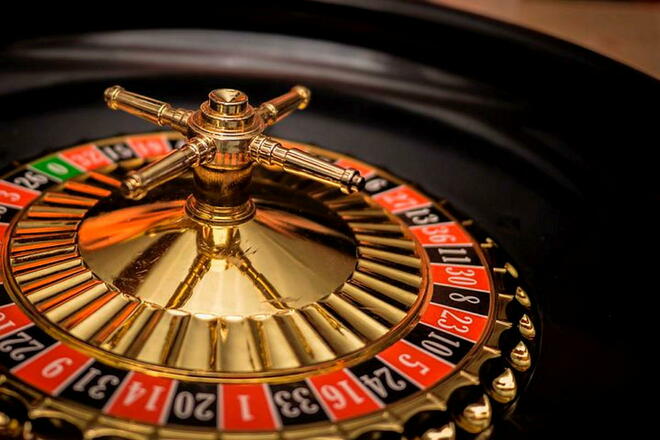
In a vibrant and stimulating world of casinos, where fortune and strategy intertwine, color and design play a pivotal role in drawing in players. As soon as visitors step into a casino or access a gaming website, they are immersed in a visual feast that grabs their attention and entices them to explore further. Vivid colors, captivating graphics, and creative layouts are meticulously crafted to create an atmosphere of excitement and expectation, ultimately enhancing the gaming experience.
While players navigate through the dynamic landscape of casino games, they come across a range of designs that not only serve aesthetic purposes but also affect emotions and decision-making. Colors like red and yellow symbolize riches and fortune, while calm navy and emeralds can create a more tranquil environment. Tải App 78Win Grasping how these elements function together enables casinos to create an inviting and energizing atmosphere that encourages players to engage with the games, invest more time at the tables, and boost their overall enjoyment.
The Psychology of Tint in Casino Games
Color plays a crucial role in the creation of gambling games, shaping players’ feelings and behaviors. Vivid and striking hues, such as red and amber, are often used to stimulate enthusiasm and capture focus. These shades create a sense of immediacy and vitality, encouraging participants to involve themselves more readily with the experience. By thoughtfully selecting colors, creators aim to elicit feelings of joy and anticipation, which can enhance the total game experience.
Distinct shades also have psychological meanings that can influence how gamblers perceive their odds of success. For example, emerald is often associated with luck and prosperity, making it a frequent choice in activities like roulette and poker tables. This association can cause players to feel more positive and confident in their gaming, ultimately encouraging them to stake more. Grasping these connections allows game developers to craft environments that enhance player happiness and loyalty.
In addition, the interface of casino game interfaces often uses blended colors and differing shades to direct players’ actions. For case, successful outcomes may be emphasized with bright, differing colors, creating a visual cue. This technique strengthens favorable outcomes and supports repeated engagement. By exploiting the psychology of color, gambling establishments can develop games that not only attract gamblers but also maintain them engaged and dedicated in their game experience.
Creative Elements that Attract Players
The aesthetic appeal of casino games is primarily influenced by the implementation of bold colors. Lively and striking colors are deliberately chosen to create an appealing atmosphere that captures attention. For example, reds and golden hues often signify good fortune and prosperity, which is why they are prevalent in the color schemes of slot machines and table surfaces. These colors not only draw players in, but they also evoke emotions associated with thrill and anticipation, enhancing the total gaming experience.
In addition to color, the aesthetic and organization of casino games play a crucial role in captivating players. Games are designed to be user-friendly, ensuring that players can easily understand the rules and gameplay. Accessible interfaces, along with captivating graphics and animations, help maintain player interest and promote extended play sessions. The tactile elements, such as the feel of the controls and the audio of the games, also add to a comprehensive sensory experience that keeps players engaged.
In conclusion, thematic elements in game design can greatly influence player choice. Many gambling games are inspired by popular culture, myths, or adventure themes, incorporating symbols and characters that connect with players. These themes create a sense of immersion and relatability, making each game feel unique. When players feel a connection to the concept, they are more likely to opt for that game over others, leading to increased participation and enthusiasm within the gambling environment. 78WIN
Case Studies: Successful Casino Slot Designs
One noteworthy example of successful casino game design is the well-known slot machine series themed around hit movies. Games such as those based on the Wizard of Oz and Game of thrones utilize vibrant colors and high-quality graphics to engage players in familiar narratives. The use of lively visuals and engaging sound effects takes the focus of players, building an psychological connection to the theme. This strategy not only fosters longer play but also boosts the overall gaming experience, leading to increased player retention.
Another effective case is the use of color psychology in table games like blackjack and the wheel. Casinos often create these games with deep reds and greens, colors traditionally associated with luck and wealth. For instance, the emerald felt on a blackjack table provides a soothing effect, while the crimson accents in the wheel invite excitement. This deliberate use of color helps to foster an inviting atmosphere that stimulates players to engage, satisfying their psychological impulses and increasing their enjoyment.
Finally, online casino games that feature social features and bright, lively designs have achieved remarkable success in engaging players. Games like Zynga Poker and Slot-O-Mania leverage striking colors and playful animations to establish an inviting online environment. The integration of leaderboards, social sharing options, and in-app rewards promotes competition and community, attracting players in for longer sessions. Such designs merely make the games visually attractive but also emphasize social interaction, a vital factor in player retention and engagement within digital casino environments.